Rainbow Vacuum Models History
This page provides a detailed and historical look into the different Rainbow vacuum models. We have consolidated information typically found scattered among a myriad of internet pages, groups, forums, blogs, and our knowledge and experience into one convenient location.
How long should a vacuum cleaner last? The Rainbow is legendary with its durability. The term "built like a tank" comes up in many discussions.
NOTE: We created this page for the models that were/are distributed in the United States.
| Model | Series | Version | Year |
|---|---|---|---|
| RHCS19 | SRX | - | 2019 |
| E2 Type 12 | Black | 2 | 2012 |
| E2 Type 12 | Black | 1 | 2011 |
| E2 Type 12 | Silver | - | 2008 |
| E2 Type 12 | Gold | 2 | 2006 |
| E2 Type 12 | e SERIES / e2 | 1 | 2004 |
| E-2 | e SERIES | 2 | 2000 |
| E-2 | e SERIES | 1 | 1998 |
| D4C | SE | 2 | 1994 |
| D4C | SE | 1 | 1990 |
| D4C | - | - | 1986 |
| D3C | - | - | 1982 |
| D3A | - | - | 1980 |
| D2A | - | - | 1979 |
| D2 | - | - | 1974 |
| D | Chrome | - | 1961 |
| D | Gold | - | 1955 |
| C | - | - | 1950 |
| 3 | - | - | 1942 |
| B | Black Diamond | - | 1940 |
| - | A | - | 1936 |
Model / Series
Rainbow Vacuum RHCS19 / SRX
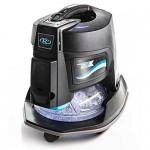 The SRX is a new design compared to the E2 Type 12 system. Rexair added a 4 speed motor for cleaning the air to vacuuming thick carpet and an all-new motor that increased airflow by 30%. A timer was also added to turn itself off after 30, 60, or 90 minutes when running as an air cleaner.
The SRX is a new design compared to the E2 Type 12 system. Rexair added a 4 speed motor for cleaning the air to vacuuming thick carpet and an all-new motor that increased airflow by 30%. A timer was also added to turn itself off after 30, 60, or 90 minutes when running as an air cleaner.
Other improvements include a lower profile so the unit does not tip over and an improved cord wrap. The motor was designed for 24/7 operation, so using it as a full-time air cleaner is not a concern for additional wear.
The buttons are now a soft touch and also forward-facing to easily switch between functions. While the 2nd version Gold series started the quiet option, the SRX has lowered the noise output even further.
Rainbow Vacuum Power Nozzle PN3 / SRX
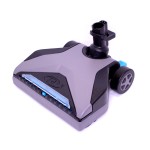 Same as the SRX Rainbow, the SRX Power nozzle is a complete change from all before it. The brush roll is now stainless steel with replaceable brush strips. Rexair has also brought back the adjustable air vent system that was used on the R-series power nozzles. It was a proven design and has finally made a comeback. This feature helps redirect airflow for when a thicker carpet restricts air movement from the bottom. Vents are opened from the top to keep airflow moving for maximum cleaning performance.
Same as the SRX Rainbow, the SRX Power nozzle is a complete change from all before it. The brush roll is now stainless steel with replaceable brush strips. Rexair has also brought back the adjustable air vent system that was used on the R-series power nozzles. It was a proven design and has finally made a comeback. This feature helps redirect airflow for when a thicker carpet restricts air movement from the bottom. Vents are opened from the top to keep airflow moving for maximum cleaning performance.
The hose connection is a significant improvement and uses a magnetic snap function to create a super easy and quick attachment. The hose handle also includes a soft-touch material that helps keep the same comfort level even during prolonged use.
Rainbow Vacuum E2 Type 12 / Black
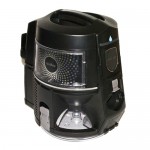 There are two versions of the E2 Type 12 Black series Rainbow. The only difference between Version 1 and Version 2 is that an LED light was added to the front of the faceplate in late 2012 for troubleshooting purposes.
There are two versions of the E2 Type 12 Black series Rainbow. The only difference between Version 1 and Version 2 is that an LED light was added to the front of the faceplate in late 2012 for troubleshooting purposes.
Though this model has a new external appearance, it is structurally similar to the E2 Type 12 Silver.
There are only two differences between the Black and Silver Rainbows. One, new blue and white LED lights to shine into the water pan providing a nice visual effect and letting you see the dirt and debris so the water pan can get changed before the water is too thick. Two, they have removed the collapsible arms for the cord wrap for quick cord removal, and now the user must remove the cord manually.
Rainbow Vacuum Power Nozzle PN-12 / Black
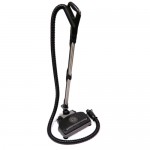 There are two versions of the PN-12 Black power nozzle, and you are able to distinguish between the two by the location of the belt.
There are two versions of the PN-12 Black power nozzle, and you are able to distinguish between the two by the location of the belt.
Version 1 has the belt located in the center of the brush roll, and Version 2 has the belt located on the side of the brush roll. Version 2 is considered an improvement because they removed the center belt from the airflow path. Moving the belt to the side could result in issues with edge cleaning, but side edge brushes spin to overcome any additional problems caused by this transition.
Rainbow Vacuum AquaMate AM-12 (IV) / Black
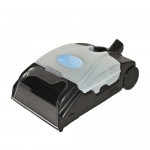 Currently, there is only one version of this AquaMate, which is explicitly designed to work with the Black model Rainbow. The only difference between the AM-12 IV and the previous AquaMate III are the new connections that fit the Black series hose connection.
Currently, there is only one version of this AquaMate, which is explicitly designed to work with the Black model Rainbow. The only difference between the AM-12 IV and the previous AquaMate III are the new connections that fit the Black series hose connection.
Rainbow Vacuum RainbowMate RM-12 / Black
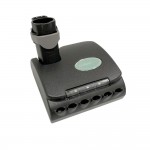
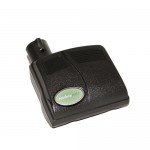 The Black series RainbowMate has two versions. On June 1st, 2017, the second version was introduced that included an LED light much like the power nozzle and a pivot arm that allowed cleaning at different angles much more accessible.
The Black series RainbowMate has two versions. On June 1st, 2017, the second version was introduced that included an LED light much like the power nozzle and a pivot arm that allowed cleaning at different angles much more accessible.
The first version is precisely the same as the Silver series RainbowMate, and the only difference is that this has the correct connections to work with the self-docking wands that come standard with the "Black" version Rainbow.
Rainbow Vacuum RainJet RJ-12 / Black
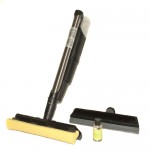 This is the first introduction to the RainJet. There have been no version changes to this model to date. (December 2018)
This is the first introduction to the RainJet. There have been no version changes to this model to date. (December 2018)
Rainbow Vacuum E2 Type 12 / Silver
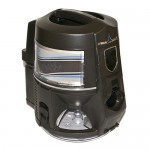 The "Silver" series E2 Type 12 has two versions. The differences are in the motor, and the second version has some design improvements to help with motor/pump durability.
The "Silver" series E2 Type 12 has two versions. The differences are in the motor, and the second version has some design improvements to help with motor/pump durability.
Rainbow Vacuum Power Nozzle PN-2E / Silver
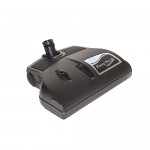 This power nozzle with the "Silver" applique on top only has one version, considered Version 5 in the schematics.
This power nozzle with the "Silver" applique on top only has one version, considered Version 5 in the schematics.
Rainbow Vacuum AquaMate AM-12 (III) / Silver
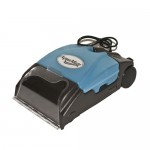 The AquaMate Silver series has two versions. The early version has two actuators, one on each side of the pivot arm. The second version started with serial number 00143500 and only has one actuator. This helped reduce parts and create a more straightforward design.
The AquaMate Silver series has two versions. The early version has two actuators, one on each side of the pivot arm. The second version started with serial number 00143500 and only has one actuator. This helped reduce parts and create a more straightforward design.
Some refer to this as the AquaMate III and the Black series AM-12 as the AquaMate IV.
Rainbow Vacuum RainbowMate RM-12 / Silver
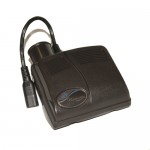 The Silver series RainbowMate was the first miniature version compared to previous RainbowMates. Serial numbers were no longer stamped or used starting with this version.
The Silver series RainbowMate was the first miniature version compared to previous RainbowMates. Serial numbers were no longer stamped or used starting with this version.
Rainbow Vacuum MiniJet MJ-12
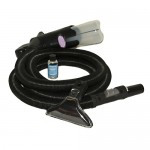 This is the first introduction to the MiniJet. There have been no version changes to this model to date. (December 2018)
This is the first introduction to the MiniJet. There have been no version changes to this model to date. (December 2018)
Rainbow Vacuum E2 Type 12 / Gold
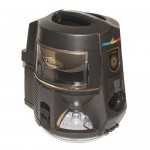
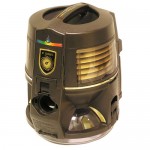 The "Gold" version Rainbow has had several revisions. The early production of this model has very similar stripes compared to the E-2 (e SERIES) Rainbow.
The "Gold" version Rainbow has had several revisions. The early production of this model has very similar stripes compared to the E-2 (e SERIES) Rainbow.
The following significant change was with the introduction of the reduced sound version. The motor has had several improvements during its run to help increase durability.
The sound reduction acoustic foam installed made a significant difference in the noise level in both HI and LOW speed.
Rainbow Vacuum Power Nozzle PN-2E / Gold
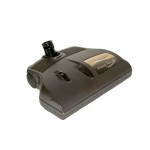 This power nozzle is difficult to identify as well as service. During its run, it had several changes, and not all the parts worked together. During service, you must look closely at the schematics to determine what version you have. The applique on top will not give much help.
This power nozzle is difficult to identify as well as service. During its run, it had several changes, and not all the parts worked together. During service, you must look closely at the schematics to determine what version you have. The applique on top will not give much help.
Early version power nozzles still had the black applique that was in use on the power nozzle that came initially with the E-2 (e SERIES) in 1998, and it wasn't till later on when Rexair finally created a matching "Gold" applique. Also, look at the handle on the electric hose closely, as this has gone through three revisions.
Rainbow Vacuum AquaMate AM-2 (AquaMate II)
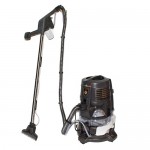 This AquaMate is the first version to get away from the supply water coming from a hose connected to a sink faucet. The supply water is placed in a tank that sits under the Rainbow and water pan in the dolly.
This AquaMate is the first version to get away from the supply water coming from a hose connected to a sink faucet. The supply water is placed in a tank that sits under the Rainbow and water pan in the dolly.
The early pumps on this model were inferior, and Rexair quickly looked to a new design carpet cleaner. The pumps have been improved for service purposes, but many people purchase the new water pick-up hose and opt for the AquaMate III.
Rainbow Vacuum RainbowMate RM-2E / Gold
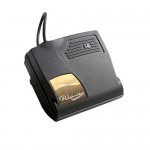 The RM-2E Gold series is the same as the previous version, and only an applique change sets the "Gold" version from the second version original RM-2E RainbowMate.
The RM-2E Gold series is the same as the previous version, and only an applique change sets the "Gold" version from the second version original RM-2E RainbowMate.
Rainbow Vacuum E-2 / e SERIES
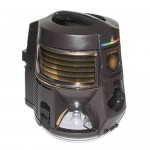 The E-2 model e SERIES Rainbow is set apart into two versions. The second version became effective on 03/27/00 and serial number 9280000. The second version has an easily removable rear cover to allow changing the HEPA filter a simple process. The first version has to have four screws removed to allow access to the HEPA filter.
The E-2 model e SERIES Rainbow is set apart into two versions. The second version became effective on 03/27/00 and serial number 9280000. The second version has an easily removable rear cover to allow changing the HEPA filter a simple process. The first version has to have four screws removed to allow access to the HEPA filter.
This model initially had two different motor variations but was not connected to the revisions by serial number mentioned above. Both design motors were installed in both version E-2 units. The AME motor was made by Ametek and was the lower quality of the two variations.
The second version, GSE, was made by GS Electric and was a superior motor. In 2001 Ametek bought out GS Electric and became the only manufacturer that supplied motors for the Rainbow E-2. Ametek decided to drop the production of the AME motor and decided to focus exclusively on the GSE motor.
Parts are available for both the AME and the GSE motors. These parts are not interchangeable. Double-check the schematics page to ensure you have the proper model motor before ordering parts. The schematics will give details on both these motors to be sure to get the correct parts for your model.
Over the years, there have been several improvements to the GSE motor. Purchasing a new motor will provide better results in both performance and durability than the original.
Rainbow Vacuum Power Nozzle PN-2E / e SERIES
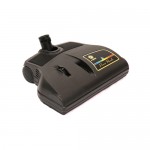 The PN-2E family power nozzle is no joy to service if you don't know exactly what version you have. Many changes over the years have been made on this model power nozzle, and you must look at the schematics and item descriptions on our website to make sure you are ordering the correct part.
The PN-2E family power nozzle is no joy to service if you don't know exactly what version you have. Many changes over the years have been made on this model power nozzle, and you must look at the schematics and item descriptions on our website to make sure you are ordering the correct part.
This is the first version power nozzle to have an actual height adjustment wheel for thicker carpets.
Rainbow Vacuum AquaMate I / e SERIES
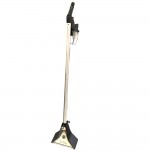 Minor changes to the e SERIES AquaMate are about the only difference compared to the previous version. You can view the schematics to find the small part changes and improvements.
Minor changes to the e SERIES AquaMate are about the only difference compared to the previous version. You can view the schematics to find the small part changes and improvements.
Rainbow Vacuum RainbowMate RM-2E / e SERIES
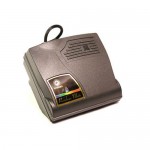 The RM-2E RainbowMate is exactly the same as the RM-2 except for the power cord connection that was changed to work with the improved electric hose receptacle.
The RM-2E RainbowMate is exactly the same as the RM-2 except for the power cord connection that was changed to work with the improved electric hose receptacle.
The early version design included the same circuit breaker (reset button) as the RM-2. After a short period, Rexair realized that the power control trigger in the handle allowed the user to quickly cut power to this attachment. Hence, they opted to remove the circuit breaker altogether.
RainMate
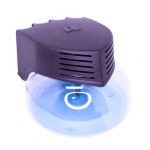
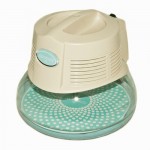 The RainMate has had several versions since it was first introduced. Many changes were cosmetic. The first version had four slots in the back to hold Rexair fragrances, but that has now been removed.
The RainMate has had several versions since it was first introduced. Many changes were cosmetic. The first version had four slots in the back to hold Rexair fragrances, but that has now been removed.
The IL version was introduced and included LED lights that shine into the water. The switch had a high/low setting for the brightness of the lights. In April 2015, Rexair introduced an improvement that allowed the LED lights to be turned off completely.
Rainbow Vacuum D4C / Special Edition (SE)
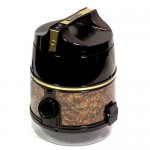 The Rainbow D4C (Special Edition) was the last of the D series and ran from 1990-1998. This Rainbow is the last model Rainbow not to use a HEPA filter. The first version used the same motor as the D4C but shortly after, the motor went through several improvements.
The Rainbow D4C (Special Edition) was the last of the D series and ran from 1990-1998. This Rainbow is the last model Rainbow not to use a HEPA filter. The first version used the same motor as the D4C but shortly after, the motor went through several improvements.
The armature and carbon brushes were an improvement for better performance as well as many of the small motor parts received attention. The top of the armature was a problem area as the inner race on the bearing would spin slightly during use. The factory engineers solved this issue by introducing a tolerance ring to help "lock" the inner race and was an immediate cure.
Other improvements included the flange that received a black coating to prevent rust and corrosion. The first version of this improvement failed as the company that was outsourced to do the coating did not perform one of the steps, which led to significant peeling and corrosion issues. These flanges are easily identifiable by the four screw holes instead of the traditional 8 used before and after.
Some technicians try only to use four screws in an eight-hole flange, but that can lead to water leaking into the air-path and water blowing out the exhaust port.
The main power switch has also changed from a four-wire design to a six-port spring load design. This design was found to be a problem for service as the loaded springs could easily become damaged and require the entire switch to be replaced. Rexair decided it was best to go back to the four-wire switch, and it has been used ever since.
The power nozzle receptacle was also improved by giving move depth for the plug to insert. This gave a better connection and extended the life of the receptacle ports from getting too loose and allowing the plug to fall out easily.
The separator was a considerable change and is recorded as dramatically improving the performance of the filtering process. The new SE design moved the fins from a 45-degree angle to a more straight up and down configuration. The new design also has a hex pocket in the bottom to allow the motor nut to set into and hold the motor while removing the separator nut.
The early spider was a cone shape and matched the gray color of the original separator. Later in the manufacturing process, Rexair engineers decided to go back to a similar spider that looks more like the spider from the D4 and D3C.
The old spider is slightly different and does not work with the new separator, so it should be replaced as a pair to ensure proper function. An easy way to tell the old design spider from the original D4 and D3C is the color. The old design is an off-white or cream color, while the new design for use with the SE separator is black.
The top of the handle initially said Rainbow SE, but that decal was discontinued many years before the D4 applique, so you can't go by the handle decal to determine if you have the SE series. The D4 applique only says "Rainbow" without the "SE". You may find many "SE" Rainbows that have had the handle applique replaced and would make someone think that it was just a standard D4.
In 1994 when the "PE" power nozzle was introduced, the Rainbow got a few slight changes. The decals on the latches and the dolly were removed and replaced with lines molded into the plastic. This reduced down part numbers, and many felt it made for a better look.
The standard non-electric accessory hose was not made as heavy-duty as the standard hoses before. This hose was rated as a nine-yarn construction and did not need constant use due to the new electric hose design for the accompanying power nozzle. An easy way to tell the difference is the nine yarn is a very dark brown color similar to the main housing.
The older standard hoses used on the R-2800 and R-1650 power nozzles were lighter in color and made from an 18 yarn construction. All-new standard hoses are an 18 yarn design as the 9 yarn has been discontinued.
Rainbow Vacuum Power Nozzle PN-2 / Performance Edition (PE)
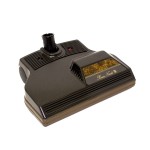 The PN-2 model power nozzle was a vastly improved design change after 14 years with the R-series power nozzle. The "Performance Edition" was introduced in 1994 with an improved brush roll head design and a user-friendly electric hose.
The PN-2 model power nozzle was a vastly improved design change after 14 years with the R-series power nozzle. The "Performance Edition" was introduced in 1994 with an improved brush roll head design and a user-friendly electric hose.
The new hose now included a trigger in the handle to turn the motor on and off. This allows you to let off the trigger if you were vacuuming a throw rug to prevent the rug's ends from getting caught in the brush roll. With this new design came a plastic bottom that allowed the power nozzle to be used on bare floors.
The soleplate is easy to remove for belt replacement and clog inspection without the need for a screwdriver. The pivot arm was also beefed up to prevent breaking, which was more common on the R-series power nozzles.
Rainbow Vacuum Power Nozzle R-4375C / Special Edition (SE)
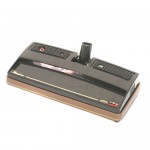 The changes in the R-4375 model power nozzle were minimal when it came to the head itself, but the new electric hose system was a significant improvement.
The changes in the R-4375 model power nozzle were minimal when it came to the head itself, but the new electric hose system was a significant improvement.
The new hose design had the power cord installed into the cover and had a plugin for the hose handle positioned at the top of the long metal wand to allow the hose to be disconnected from the powerhead. This improvement allowed you to clean with the small attachments while using the same hose.
The end of the hose is a small "pigtail" cord that comes out and plugs into the receptacle in the Rainbow. Another improvement was the mounting plate for the circuit breaker. A solid mount plate was installed and prevented vibration from allowing it to come loose.
Rainbow Vacuum AquaMate I / Special Edition (SE)
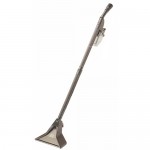 The first version that came with the "SE" system was almost exactly like the one with the D4, and a small decal change in the head was about the only difference. The second version, however employed the new soap switch and got away from the slide pinch design.
The first version that came with the "SE" system was almost exactly like the one with the D4, and a small decal change in the head was about the only difference. The second version, however employed the new soap switch and got away from the slide pinch design.
The threaded faucet end was also improved with a more significant outside section and increased threads to help use multiple gaskets if needed. The larger "nut" really helped with tightening and losing from the faucet.
Rainbow Vacuum RainbowMate RM-2 / Special Edition (SE)
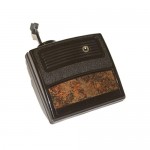 The RM-2 was the introduction of the RainbowMate and was a nice add-on to the Rainbow. This unit allowed the user to clean upholstery, carpeted steps, hard-to-reach areas, and your vehicle. The RainbowMate attachment is straightforward to repair if needed, and parts are inexpensive.
The RM-2 was the introduction of the RainbowMate and was a nice add-on to the Rainbow. This unit allowed the user to clean upholstery, carpeted steps, hard-to-reach areas, and your vehicle. The RainbowMate attachment is straightforward to repair if needed, and parts are inexpensive.
Rainbow Vacuum D4C
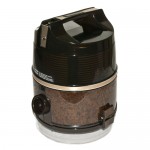 The D4 model Rainbow was a significant change compared to the D3. The overall dimensions and number of parts in the motor were reduced. The performance is close to the same, but the smaller size and fewer parts to go bad made for a significant improvement.
The D4 model Rainbow was a significant change compared to the D3. The overall dimensions and number of parts in the motor were reduced. The performance is close to the same, but the smaller size and fewer parts to go bad made for a significant improvement.
The main power switch was moved from the side of the Rainbow to the top. This made it easier to turn on/off the motor no matter where you were positioned.
Rexair started using more rust-resistant material, which allowed the D4 to take more abuse and still be able to repair without replacing the entire motor. This model also was the start of installing a thermal cut-off to help protect the motor from overheating. The early version installed this on the main housing, but later it was moved to a semi-permanent location on the field.
Also, in the early version, the cooling fan was metal and was found to be a design flaw. The fan would crash into the motor shroud damaging it, and sometimes breaking fins off the cooling fan. This would allow the fins to destroy the field and armature by cutting the winding. The improved plastic motor fan has turned out to be the exact solution as this problem never happened again. The cap cover assembly went through some cosmetic changes over the years. Early versions were completely smooth, just like the side of the cover assembly. The later design changed it to a hammered finish and helped hide scratches and scuff marks.
Rainbow Vacuum Power Nozzle R-2800C
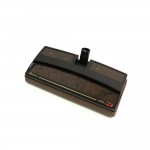 The R-2800 series power nozzle had very little difference compared to the R-1650 model that came before it. The color was darker, "chocolate brown," compared to the D3 series of "oxford brown". The two appliques on the top were slightly changed, and the main decal on the top matched the D4 series main housing.
The R-2800 series power nozzle had very little difference compared to the R-1650 model that came before it. The color was darker, "chocolate brown," compared to the D3 series of "oxford brown". The two appliques on the top were slightly changed, and the main decal on the top matched the D4 series main housing.
The cord straps used to hold the power cord to the hose were changed to a clear transparent strap. Also, a unique smaller strap was made available for the top curved wand. The gold snap easily identified this strap instead of silver on all the rest.
Rainbow Vacuum AquaMate I / D4
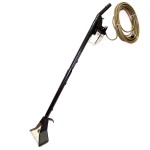 Coming Soon...
Coming Soon...
Rainbow Vacuum D3C / D3A
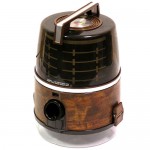 The D3 model Rainbow was the first for Rexair in the design of an all-plastic outer shell. The early version was the D3A, and it had almost the same motor as the D2A. A separator bolt and a metal separator were present.
The D3 model Rainbow was the first for Rexair in the design of an all-plastic outer shell. The early version was the D3A, and it had almost the same motor as the D2A. A separator bolt and a metal separator were present.
This version also had a three-prong receptacle to accept the R-1650A power nozzle.
In June of 1982, the D3C was introduced. The motor was redesigned with a threaded armature shaft that accepted a nut to secure a plastic separator in place. It also went to the two-prong receptacle that continued its use with the D4 model line.
The inner baffle changed colors over the years (white with brown stripes, brown with white stripes). The switch cover did as well. This cover was initially orange, then white, and finally settled on black.
The bearings and motor brushes were an improvement for the D3C. Less cost while keeping the same bearing quality and improved consistency on the carbon material for the motor brushes.
The early exhaust cover had three tabs that would keep it held secure on the cap assembly. These tabs would break easily, which started the duct tape trend of taping the exhaust cover in place. This cover was improved to a solid twist style and was never an issue again.
The drawback of this design is that the intake air was a major motor cooling factor. If you clogged the hose and kept running it long enough, you could melt the cap since it was plastic. The motor didn't have a thermal cut-off, so you could keep running it until the motor would "varnish," which gave off a really "pleasant" smell. The varnish would get all over the inside of the motor and housing, so you ended up having to replace the entire motor. Never something a high-level technician ever wanted to do. Rebuilding is in the blood, so replacing a motor was not done lightly.
Rainbow Vacuum Power Nozzle R-1650C / R-1650A
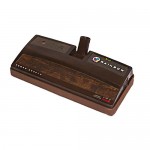 Coming Soon...
Coming Soon...
Rainbow Vacuum AquaMate I / D3
 Coming Soon...
Coming Soon...
Rainbow Vacuum AquaMate
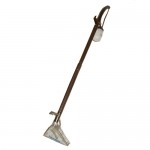 Coming Soon...
Coming Soon...
Rainbow Vacuum D2 / D
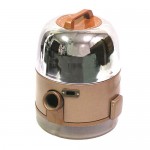 Coming Soon...
Coming Soon...
Rainbow Vacuum Power Nozzle R1024A-H
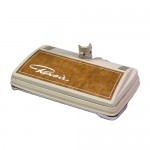 Coming Soon...
Coming Soon...
Rainbow Vacuum Power Nozzle R1024F
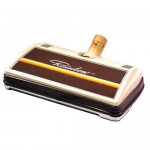 Coming Soon...
Coming Soon...
Rexair Vacuum D
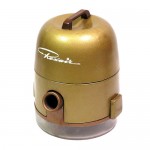 The start of this model had the company name "Rexair" on the front top cap, and by the end of 1960, it was replaced with the word "Rainbow" and a full-color rainbow across it.
The start of this model had the company name "Rexair" on the front top cap, and by the end of 1960, it was replaced with the word "Rainbow" and a full-color rainbow across it.
The reason is due to a change in operations within Rexair and the sales offices. The sales offices became independent distributors, and the product name was changed to "Rainbow" to separate it from the manufacturer's name.
Rexair Vacuum C
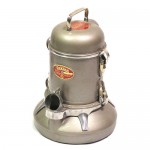 Model C was again exactly the same as the two previous models except for a color change to silver with red trim.
Model C was again exactly the same as the two previous models except for a color change to silver with red trim.
The curved bottom wand and both a locking rug and floor tool were improvements over the straight wand/friction fit tools that came standard on previous models.
This model also saw the introduction of the plastic water pan and also an optional larger water pan.
Rexair Vacuum 3
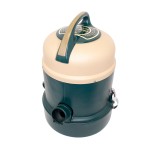
The Remarkable History of Rexair's Vacuum Cleaner During World War II
Introduction
The story of Rexair's Rainbow vacuum cleaner during World War II is not just a tale of a household appliance but a narrative of innovation, adaptability, and significant contribution to the war effort. In this article, we delve into the fascinating history of Rexair's Rainbow vacuum cleaner during this tumultuous period, highlighting key innovations, manufacturing adaptations, and the unique role these vacuums played during the war.
Early Innovations and Wartime Expansion
Rexair's journey into innovative vacuum cleaner design began in 1936 when T. Russ Hill, inspired by street cleaners, introduced the idea of incorporating water into Rexair's design. This groundbreaking concept led to the development of the "Wet Dust Can't Fly!" slogan and was recognized by medical professionals as a significant advancement for allergy and hay fever sufferers by the late 1930s.
As World War II commenced, Rexair had already established itself as an innovative force in the vacuum cleaner industry. In 1941, a strategic merger with the Martin-Parry Corporation in Toledo, Ohio, significantly expanded Rexair's manufacturing capabilities. This expansion was timely, as the company soon began contributing to the war effort by producing radar cases, rocket launchers, and ship partitions and linings.
Unique Production During WWII
What sets Rexair apart in the history of wartime manufacturing is that it was the only company permitted to continue producing vacuum cleaners during World War II. These vacuum cleaners were prescribed by doctors to people with respiratory issues, which allowed Rexair to maintain limited production throughout the war.
Role in Military Healthcare
Many of Rexair's vacuum cleaners, particularly the Model Three, introduced in 1942, were sold to the military for use in hospital rooms. These vacuums played a crucial role in cleaning the air for patients, underlining their effectiveness in improving air quality in critical healthcare settings.
Post-War Developments
Post-war, Rexair continued to innovate and expand its product line. The Model Three, produced until 1946, laid the foundation for subsequent models. After the war, the company introduced the Model C and continued its tradition of pioneering vacuum cleaner technology.
Conclusion
Rexair's Rainbow (Rexair) vacuum cleaner's history during World War II is a testament to the company's resilience, ingenuity, and ability to adapt in the face of global challenges. From its innovative water-based filtration system to its crucial role in supporting both the war effort and healthcare needs, Rexair's contributions during this period are a significant chapter in the broader narrative of technological advancement and industrial adaptability in times of crisis.
Rexair Vacuum B
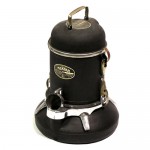 Model B, "Black Diamond," is the same as the Series A except for the black color, front nameplate, and water pan change.
Model B, "Black Diamond," is the same as the Series A except for the black color, front nameplate, and water pan change.
The improved water pan was redesigned with a built-in flange to allow an entire rubber gasket/diaphragm to lay on instead of a metal flange with a rubber gasket on top.
Rexair Vacuum - / A
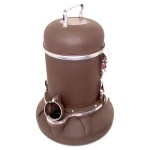 If you wonder why there is a dash in the model section of the title, that is because this Rexair only says "Series A" on the top nameplate and not "Model" as in all future Rexair / Rainbows.
If you wonder why there is a dash in the model section of the title, that is because this Rexair only says "Series A" on the top nameplate and not "Model" as in all future Rexair / Rainbows.


